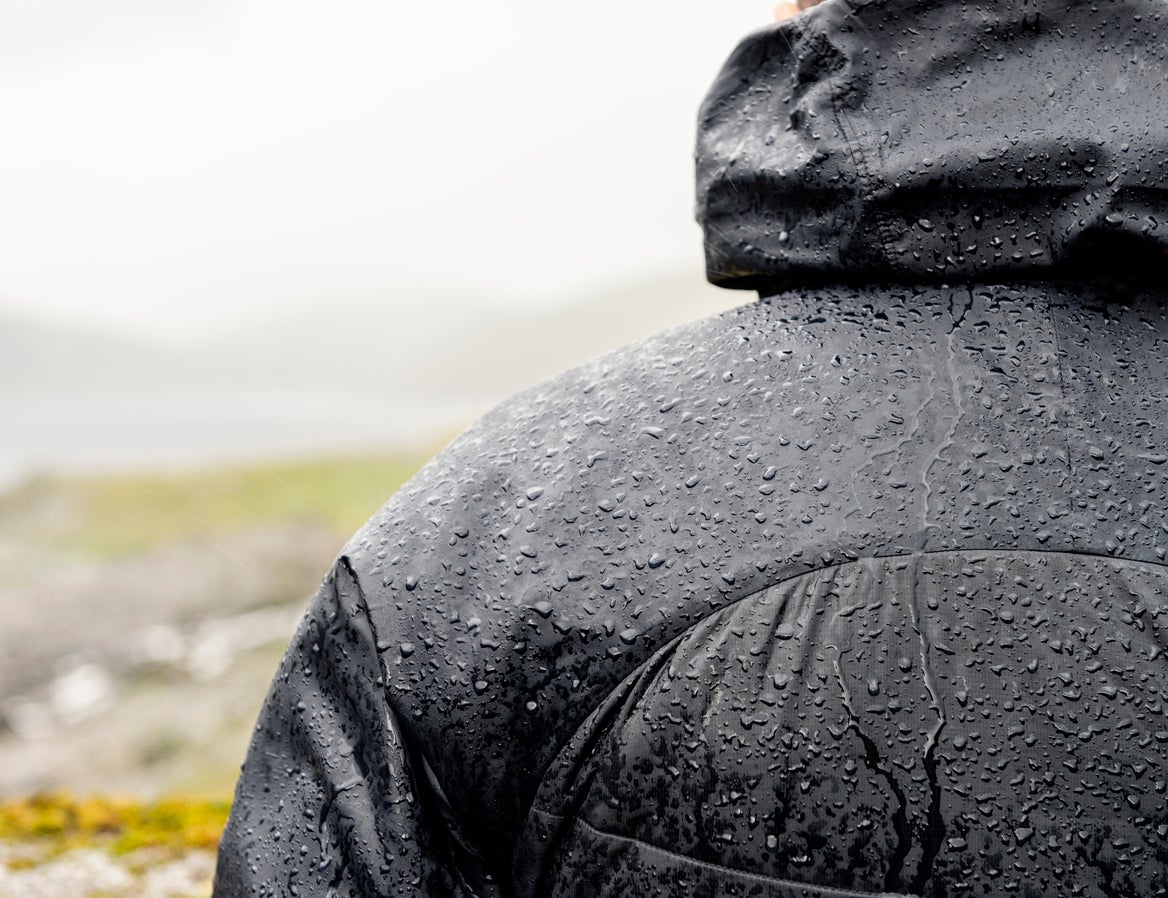Green Gear Gets Better

A warm, waterproof jacket protecting a man from heavy rain on a hiking trip.
Green gear isn’t what it used to be—and that’s a good thing.
A decade ago, when manufacturers first started to offer sustainably-made versions of outdoor fabrics and equipment, hikers couldn’t always count on the greener options to perform as well as their existing gear. Fabrics made from recycled content weren’t always as durable as the new nylons, and the greener
DWR treatments didn’t last as long as the standard stuff.
Ultimately, gear that gives out too quickly isn’t sustainable, because it gets discarded into landfills. Nothing green about that.
One of the biggest challenges in the apparel world is developing a greener DWR that really works. The trouble with conventional DWR treatments is that they’re made of perfluorocarbons (PFCs), which don’t break down in the environment (or our bodies). One particularly offensive PFC, called perfluorooctanoic acid (PFOA), is a suspected carcinogen. So many companies have transitioned from C8-sources of
PFOA (which is an eight-carbon molecule) to C6 alternatives (which are comprised of six-carbon chains and cannot produce PFOA). But while those C6 formulations are better, environmentally, than the old C8 potions, they don’t last as long. And they’re still PFCs.
Can you have a PFC-free rain jacket that actually lasts? One DWR manufacturer, Bolger & O’Hearn, just introduced a new fabric finish called Altopel F³ that uses zero fluorocarbons. But it also promises the highest level of durability : Independent lab testing found that Altopel F³ equals the water-repellency of the old C8 treatments—and has true staying power (it survives laundering and abrasion far better than yesteryear’s attempts at green DWR).
So if you’ve written off green gear as offering sub-par performance, it’s time to update your assessment. The performance of eco-friendly options is getting better every year. And future innovations—such as waterproof clothing treated with Altopel F³ by Bolger & O’Hearn — may be the best yet.